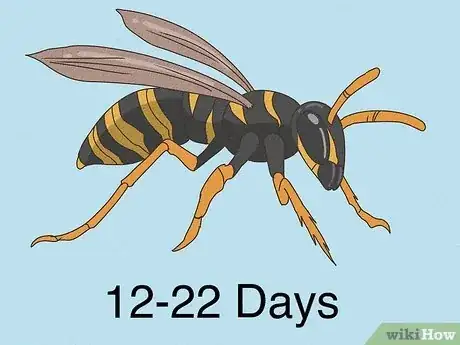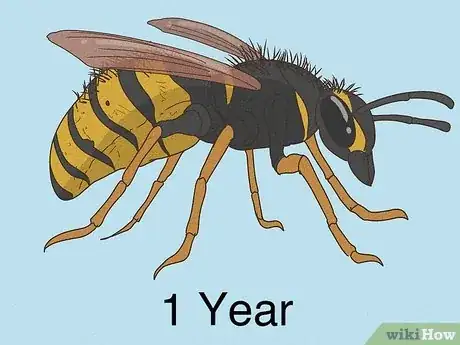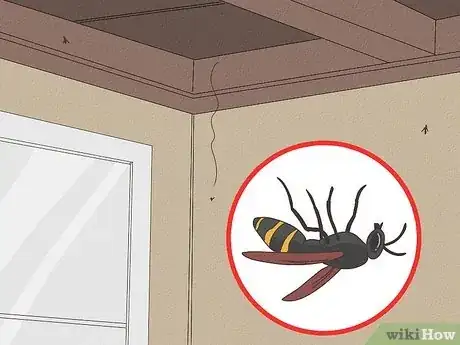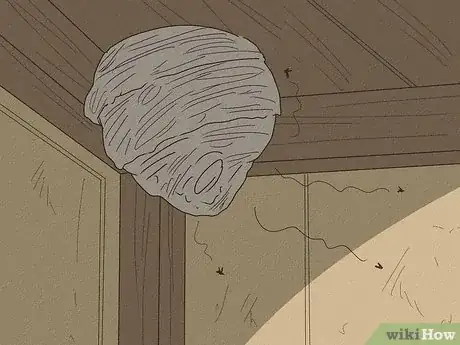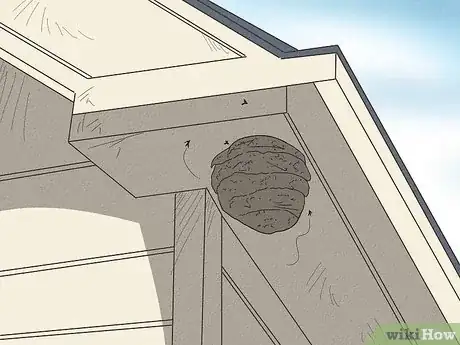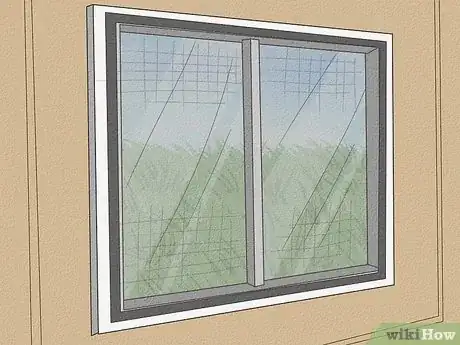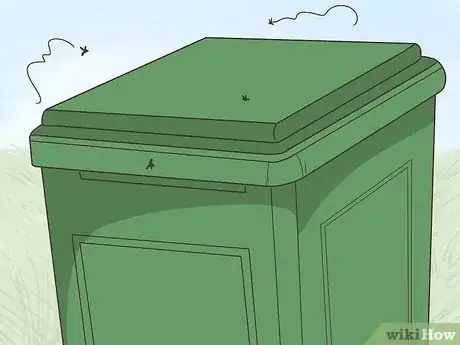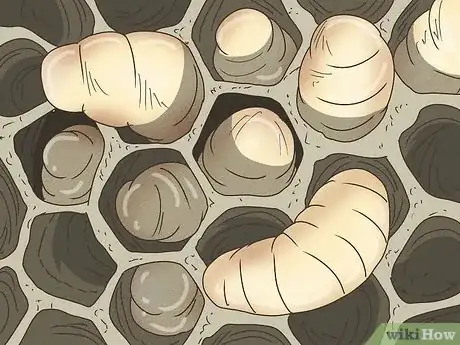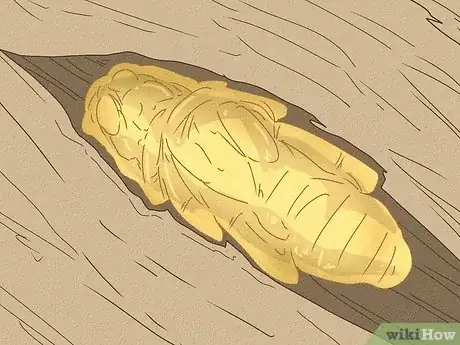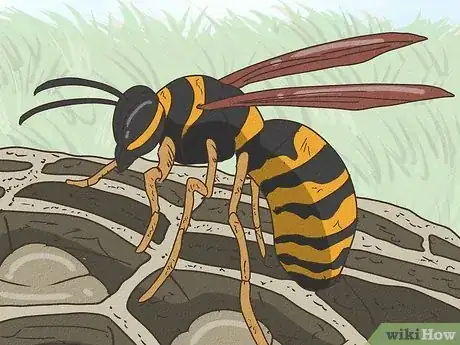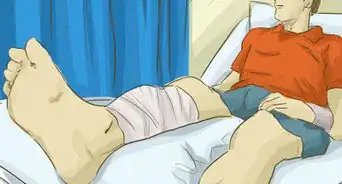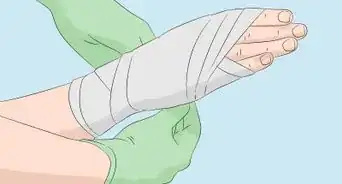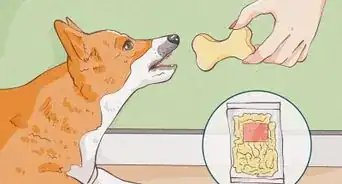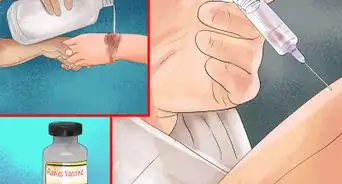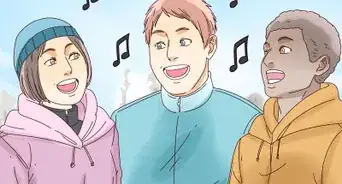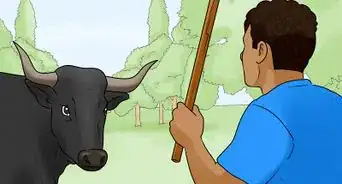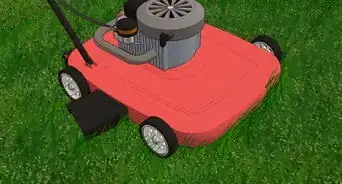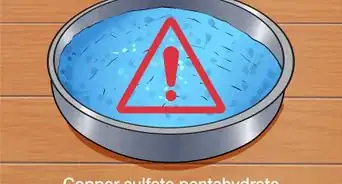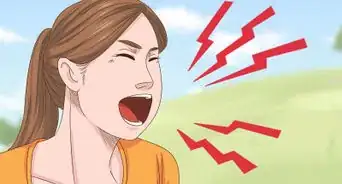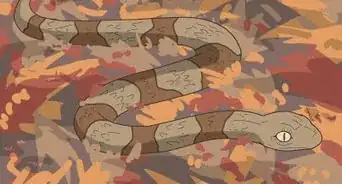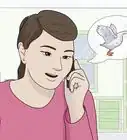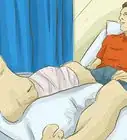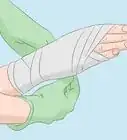This article was co-authored by Chris Parker. Chris Parker is the Founder of Parker Eco Pest Control, a sustainable pest control service in Seattle, Washington. With over seven years of experience, Chris specializes in Integrated Pest Management and doesn’t use any chemicals for pest removal. He offers removal services for ants, rodents, fleas, spiders, wasps, and more. Chris is a certified Commercial Pesticide Applicator in Washington State and received his bachelor’s from the University of Washington.
There are 9 references cited in this article, which can be found at the bottom of the page.
This article has been viewed 1,384 times.
Wasps are buzzing around your home and backyard, which naturally leads you to wonder: how long do wasps live for anyway? Can you just wait it out and let them die off? Chances are, you would rather not have these bugs hanging around you too long. Keep reading to learn how long wasps live for, how long a colony typically sticks around, and what you can do to prevent future wasp nests from forming.
Steps
Expert Q&A
-
QuestionHow do you bait wasps away from your home?
 Chris ParkerChris Parker is the Founder of Parker Eco Pest Control, a sustainable pest control service in Seattle, Washington. With over seven years of experience, Chris specializes in Integrated Pest Management and doesn’t use any chemicals for pest removal. He offers removal services for ants, rodents, fleas, spiders, wasps, and more. Chris is a certified Commercial Pesticide Applicator in Washington State and received his bachelor’s from the University of Washington.
Chris ParkerChris Parker is the Founder of Parker Eco Pest Control, a sustainable pest control service in Seattle, Washington. With over seven years of experience, Chris specializes in Integrated Pest Management and doesn’t use any chemicals for pest removal. He offers removal services for ants, rodents, fleas, spiders, wasps, and more. Chris is a certified Commercial Pesticide Applicator in Washington State and received his bachelor’s from the University of Washington.
Pest Control Specialist Get a pheromone trap and place it somewhere on your property. The wasps will be drawn to the trap and die and won't be as bothersome to you.
Get a pheromone trap and place it somewhere on your property. The wasps will be drawn to the trap and die and won't be as bothersome to you.
References
- ↑ https://kidadl.com/facts/how-long-do-wasps-live-interesting-facts-about-wasps
- ↑ https://www.pestsbanned.com/wasps/how-long-do-wasps-live/
- ↑ https://kidadl.com/facts/how-long-do-wasps-live-interesting-facts-about-wasps
- ↑ https://www.clemson.edu/extension/beekeepers/fact-sheets-publications/paper-wasps.html
- ↑ https://animals.mom.com/wasps-reproduce-7160.html
- ↑ https://kidadl.com/facts/how-long-do-wasps-live-interesting-facts-about-wasps
- ↑ https://pestifier.com/how-long-can-a-wasp-survive-without-food/
- ↑ https://pestifier.com/how-long-can-a-wasp-survive-without-food/
- ↑ https://kidadl.com/facts/how-long-do-wasps-live-interesting-facts-about-wasps
- ↑ https://bpca.org.uk/a-z-of-pest-advice/wasp-control-how-to-get-rid-of-wasps-bpca-a-z-of-pests/188976#sign-of-wasp-nest
- ↑ https://extension.missouri.edu/publications/g7391
- ↑ https://www.clemson.edu/extension/beekeepers/fact-sheets-publications/paper-wasps.html
- ↑ https://www.buzzaboutbees.net/wasp-life-cycle.html
- ↑ https://www.ocvector.org/files/162ecaa92/Paper-wasps-npi.pdf
- ↑ https://www.ocvector.org/files/162ecaa92/Paper-wasps-npi.pdf
- ↑ https://extension.missouri.edu/publications/g7391
